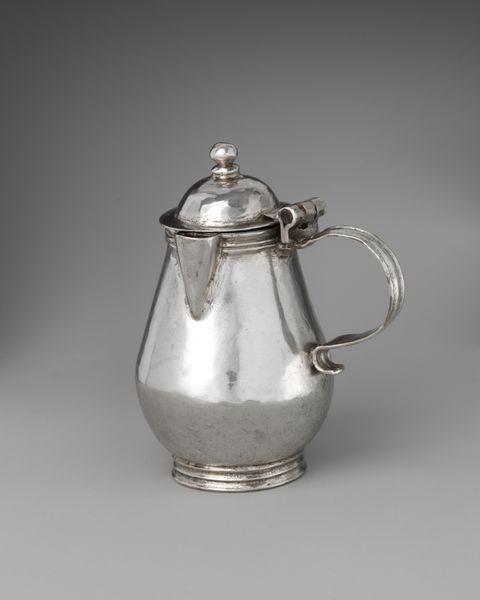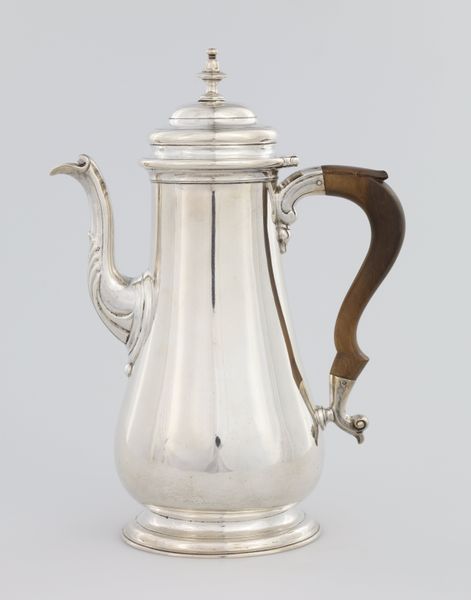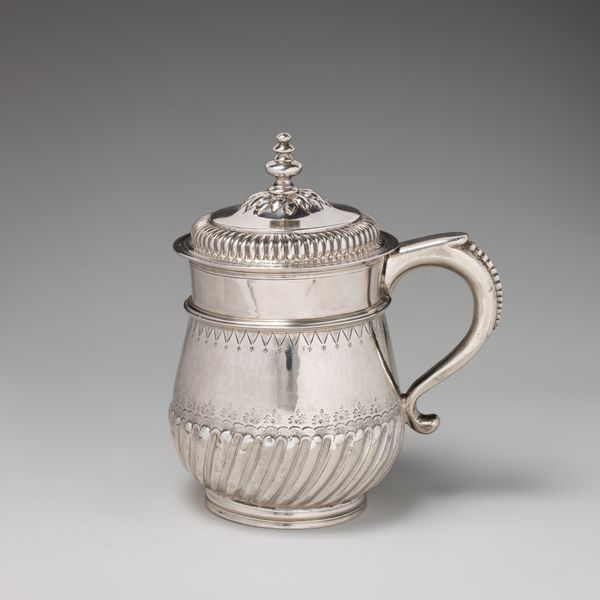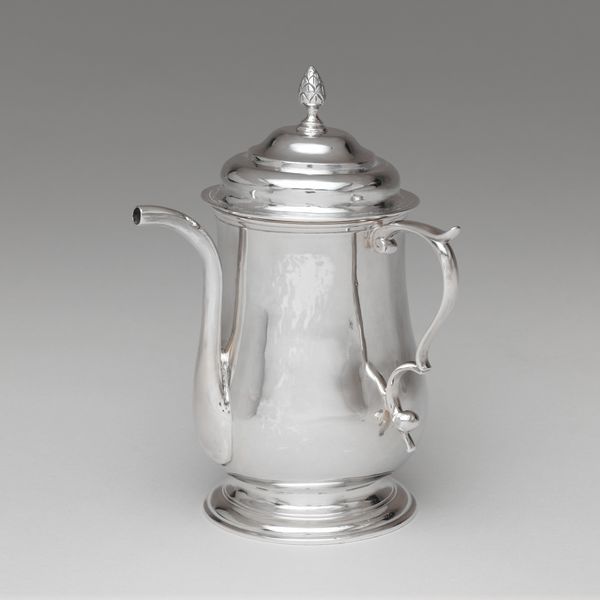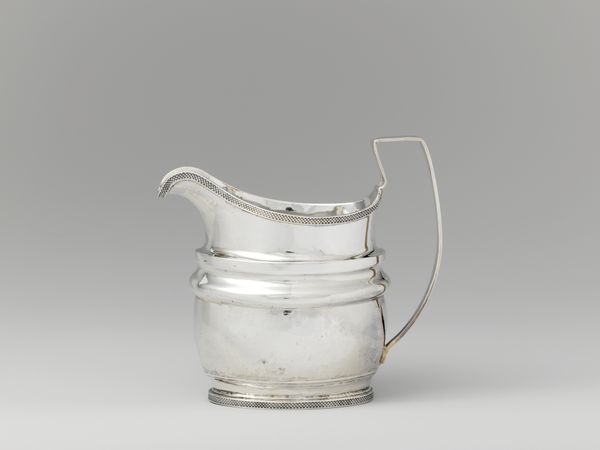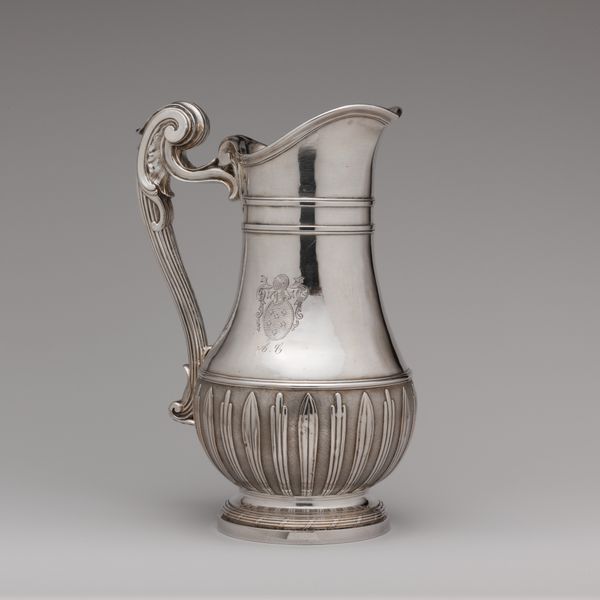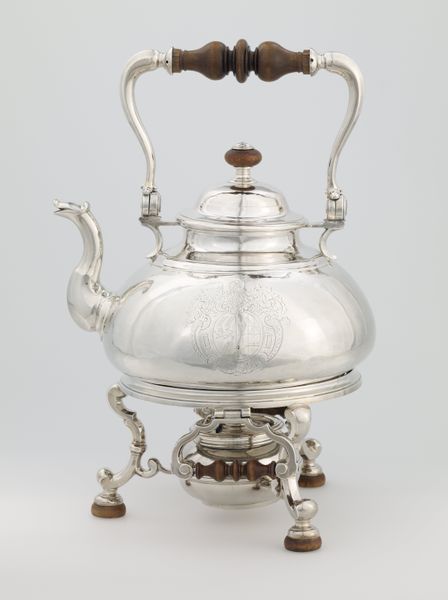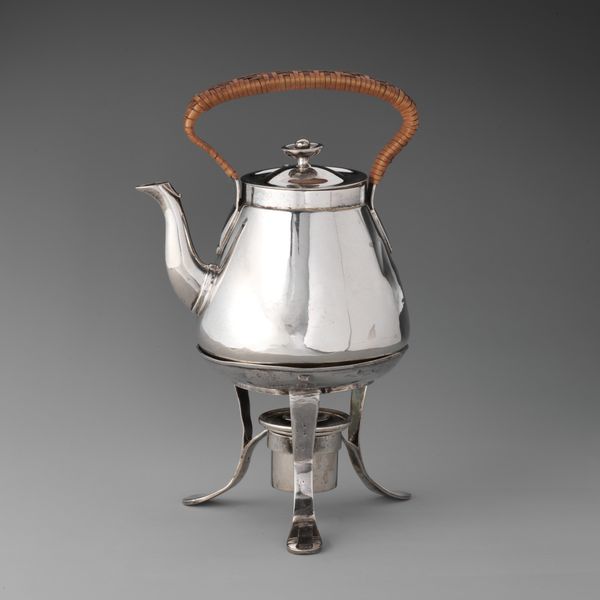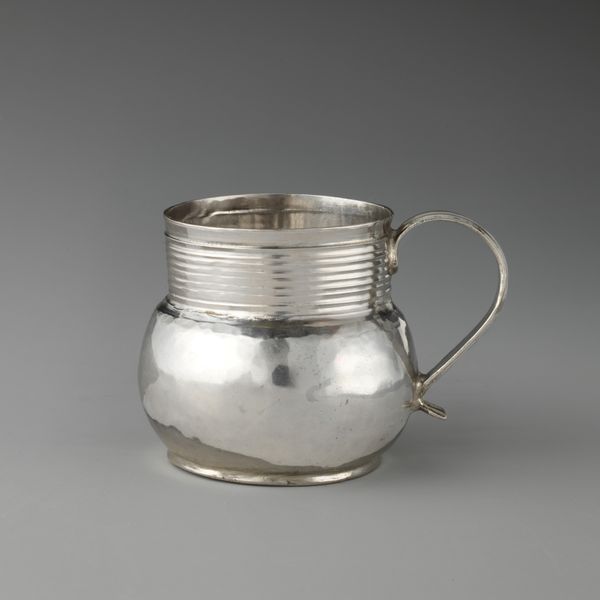
Dimensions: Overall: 5 5/8 x 4 11/16 in. (14.3 x 11.9 cm); 8 oz. 17 dwt. (275.7 g) Foot: Diam. 2 5/8 in. (6.7 cm) Pot: H. 4 7/16 in. (11.3 cm); 7 oz. 3 dwt. (221.8 g) Cover: H. 1 5/8 in. (4.1 cm); Diam. 2 9/16 in. (6.5 cm); 1 oz. 15 dwt. (53.9 g)
Copyright: Public Domain
Curator: Its hammered surface reflects light in a diffused, almost dreamy way, doesn't it? There is an intimacy conveyed by this object, even in a photograph. Editor: This is the "Milk Pot" by William Homes Sr., crafted from silver sometime between 1750 and 1775, now residing at the Metropolitan Museum of Art. Its elegant curves mark it as a piece from the late Baroque tradition. Considering its function, this domestic object offers a unique lens to examine colonial American society. Who had access to silver, to milk, and to the leisure for its presentation? Curator: Absolutely. Beyond the craftsmanship, milk itself carried significant symbolic weight in that era. Think of associations with nurture, purity, even social standing. Serving from a vessel like this wasn't merely functional, it was performative. And silver of course implies wealth and status, an articulation of power structures made evident at the breakfast table, among family. Editor: And those engraved initials-- "SWK," could offer insights into the family or individual it belonged to. This little silver milk pot likely witnessed important discussions or perhaps, quieter family rituals. What about the hammered surface, what stories might those tiny repetitive patterns reveal? Curator: The hammer marks visible on the surface act almost as an honest ledger of the silversmith's labour, in comparison to some of its grander baroque relatives. Each dimple, small dent and facet refracting the light to capture what must have been some grander scenes back then. Editor: Precisely! And consider how easily such an object could be melted down and reshaped according to circumstance. It’s a physical testament to endurance but also hints at fragility and the changing fortunes of a family during the American colonies transition. Curator: I find myself drawn to how objects like this one act as repositories of cultural memory. They ground abstract historical narratives in something tangible, personal. It provokes conversations about consumption and colonial identity in what many would otherwise think of as purely a "decorative" vessel. Editor: Yes, and by considering the multiple layers of symbolism embedded within its form and materiality, we can better appreciate not just its aesthetic value, but its value as a potent historical artifact.
Comments
No comments
Be the first to comment and join the conversation on the ultimate creative platform.
